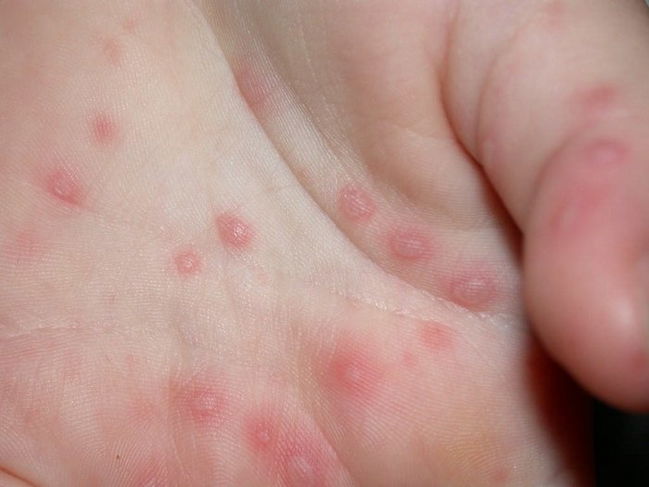Hand foot and mouth disease is a very contagious illness that most frequently occurs in children under the age of 5 (although adults can also become infected). It is caused by the coxsackievirus, and can be transmitted through direct contact between people, or through indirect contact of contaminated objects.
Generally, symptoms of hand foot and mouth disease emerge 3 to 7 days after exposure to the virus. The most common symptoms include fever over 38ºC (or over 100.4ºF), sore throat and loss of appetite. Two days after the first symptoms, painful ulcers appear in the mouth, as well as a blister rash on the hands, feet and sometimes the genital area. These blisters are often itchy.
Treatment for hand foot and mouth disease should be directed by the doctor or pediatrician. It usually involves treatment of the fever, use of anti-inflammatories and other medications for the ulcers and itchy blisters. The goal of treatment is mainly to relieve symptoms.


Main symptoms
Symptoms of hand foot and mouth disease generally appear 3 to 7 days after infection by the virus. They include:
- Fever over 38ºC (or over 100.4ºF)
- Sore throat
- Increased saliva
- Vomiting
- General malaise
- Diarrhea
- Loss of appetite
- Headache
2 to 3 days later, a rash or red blisters may appear on the hands and feet, and ulcers may also appear in the mouth. These skin and mucosa changes will help to confirm the diagnosis.
How the diagnosis is confirmed
A diagnosis is made by the doctor or pediatrician through assessment of the presenting symptoms and rash.
Hand foot and mouth disease can be confused with other illnesses due to some of its symptoms being similar to other health conditions. For example, herpangina is another viral illness that can cause an outbreak of mouth ulcers (which look very similar to herpes). Scarlet fever is another similar example, as it also causes children to break out in red rashes. Therefore, the doctor may opt to order blood work to reach a diagnosis.
Transmission Stage
The stage during which hand foot and mouth disease disease is transmitted usually occurs when the patient is actively coughing and sneezing, or when the blisters have ruptured. A person that comes in contact with the infected patient’s saliva droplets, blister discharge or even stools in the first 7 days of the infection (even if symptoms have resolved) is at risk for catching the virus. Infected stools can still be contagious for 4 weeks after the original infection.
To avoid becoming infected or to prevent transmission to other children, it is important to:
- Distance yourself from infected children
- Avoid sharing towels or any objects that have come in contact with the infected child’s mouth
- Wash your hands after coughing or sneezing, or before you touch your face
Additionally, the virus can be transmitted indirectly through contaminated objects or food. Therefore, it is important to thoroughly wash fresh food before preparing or eating. You should also change diapers of infected babies with gloves and ensure thorough hand hygiene after using the bathroom.
How treatment is carried out
Treatment of hand foot and mouth disease should be completed as directed by the doctor or pediatrician. Medication to control fevers (e.g. acetaminophen) may be indicated, as well as anti-inflammatories (e.g. ibuprofen), antihistamines (to help with itching), and oral lidocaine gel (to help treat mouth ulcers).
Treatment usually lasts for 7 days. An infected child should avoid attending daycare or school during this time to prevent transmission to other children.






























